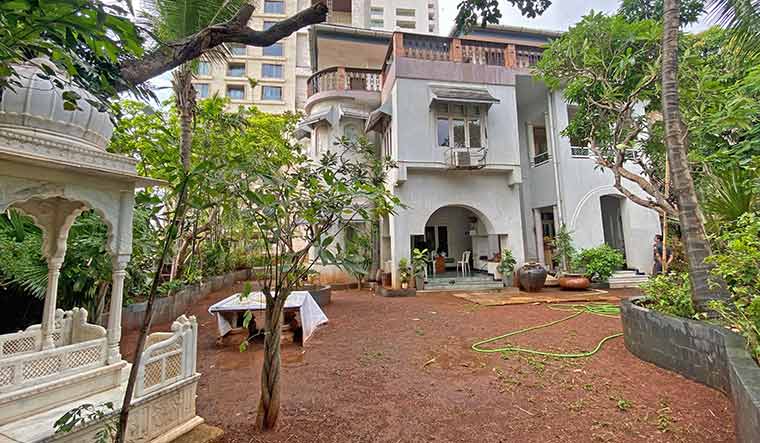On his first visit to India as a grownup in 1974, Salman Rushdie watered his roots before he immersed himself in writing. The strands that he wove into Midnight’s Children (1981) were gathered during this trip to Mumbai, Delhi and other places. While the house in Delhi held no sentimental value for him, and he probably never visited it, it was an emotionally overwhelming experience for him to revisit his childhood home in Mumbai.
He had left the house as a 13-year-old in 1961 when his father, Anis, had enrolled him at the Rugby School in England. But he continued to have fond memories of the house and the city, the original home resurfacing time and again as a powerful influence in his writings.
He had remembered the address―Windsor Villa, Warden Road, Bombay-26. This is where Anis had settled down with his family after moving from Delhi. He had sold his house in Ballimaran, Old Delhi, to a cousin.
Windsor Villa was among a group of residences bought by rich Indians from the British as they left the country after 1947. The other houses in the complex, the Westfield Estate, were also named after British royal residences, such as Sandringham Villa and Glamis Villa. It is located in the posh Mumbai suburb of Malabar Hill.
Anis sold the Mumbai house when he moved with his wife and daughters to Karachi. Salman was extremely hurt at this decision of his parents. In Joseph Anton, his memoir, he called it “the blunder that had deprived him of his home”.
If the house in Mumbai continued to have a special place in Rushdie’s heart despite changing hands, there is another family house, this one nestled in the Shimla Hills, which tugged at his heartstrings. His grandfather Khwaja Muhammad Din Khaliqi Dehlavi had built the summer cottage in Solan to escape the Delhi heat. Rushdie had never known his grandfather, who had left the house to Anis. It was a six-room stone cottage on a small plot of land but with a grand view of the Himalayas. Anis later gifted it to Rushdie. However, the property was acquired by the Himachal Pradesh government under the Evacuee Property Act.
Rushdie protested, saying that as he had never settled in Pakistan, the Himachal government could not acquire the house as an evacuee property. In 1992, he filed a case in the Himachal Pradesh High Court, claiming that he was the rightful owner of the house.
His lawyer Vijay S.T. Shankardass fought the case for him to reclaim the house. Shankardass also represented the Rushdies in the suit over the Delhi house and was embroiled in allegations of misrepresenting facts and entering into fraudulent sale deeds regarding the same.
Rushdie wrote in Joseph Anton that while Shankardass had managed to establish Anis’s title to the property, his own inheritance of it had not been accepted and the Himachal government had even said curtly that it did not want to be seen as doing favours for him. However, the legal team succeeded in finding a document that won the case for him. It was a document in which a highly placed official in the state government had stated in a sworn affidavit that he knew that Rushdie had become a citizen of Pakistan. This was factually incorrect and hence perjury.
When this document came to the fore, and also the fact that a government official was guilty of perjury, the state government changed its stance, and in April 1997, the house was once again in Rushdie’s name.
Rushdie visited the house in Solan with his son Zafar on April 13, 2000. He wrote that it was an emotional moment. It was the first time he was visiting the house since he was 12. But it felt like home. And he thought about how one day it would belong to Zafar and his other son Milan, and they would be the fourth generation of the family to come home to that cottage in Solan.
In contrast, Rushdie and the rest of the family have consistently maintained silence about the house in Delhi. Just about once or twice, when there has been any comment from either him or his sister Sameen, who is the lead defendant in the property case, they have only said that they have nothing to do with the house.


